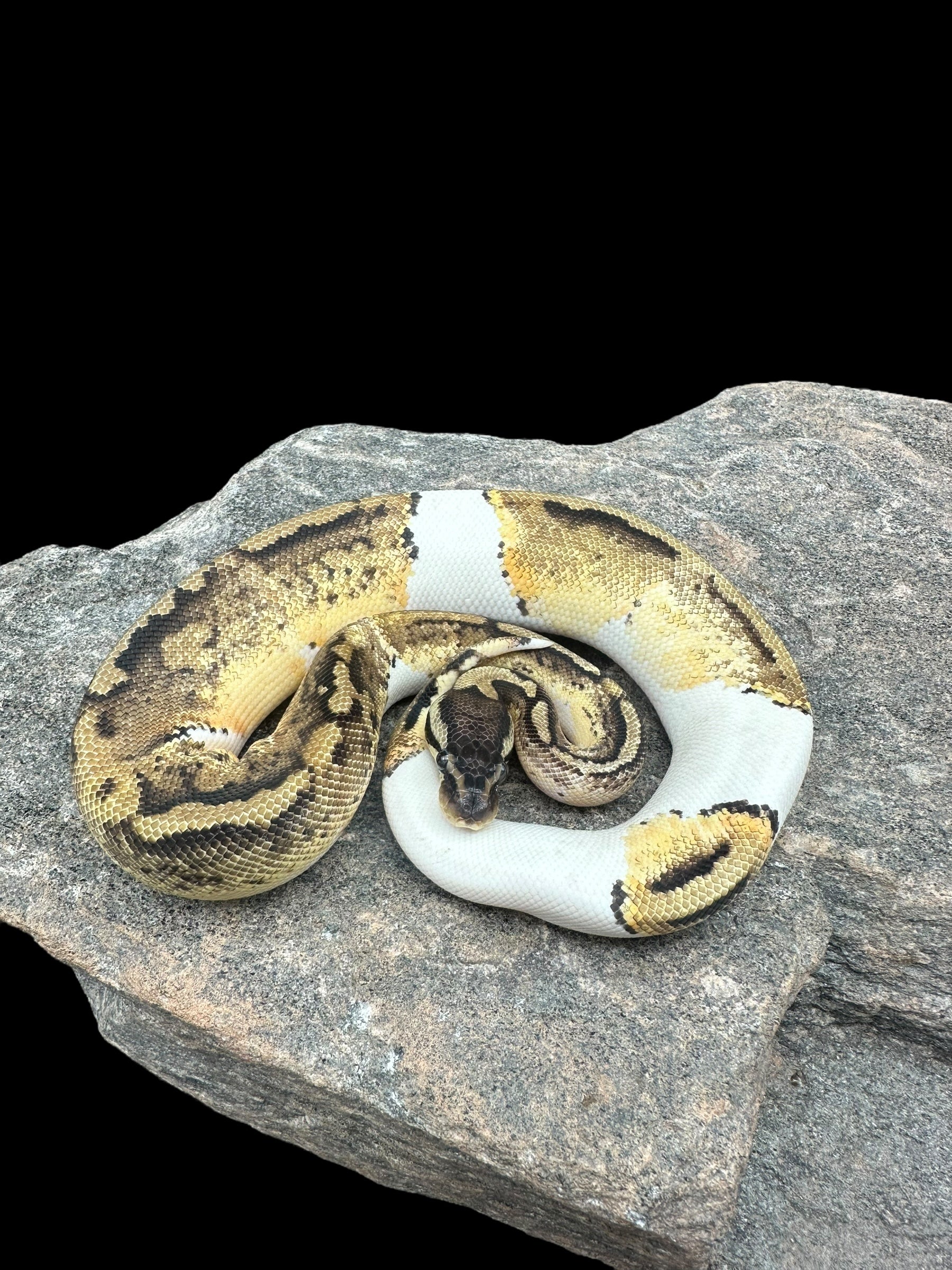Photo Disclaimer
Description
Ball Python (Pastel Pied)
Python regius
Common Names: Ball Python, Royal Python
(Pied = Piebald)
Species Overview
-
Size: Adults typically reach 3–5 feet (0.9–1.5 m), with females often being larger-bodied than males. Some females may grow up to 6 feet.
-
Appearance:
-
Pastel (co-dominant): Brightens yellow and gold tones, reduces dark pigmentation, and increases contrast. In super form, produces the very bright Super Pastel.
-
Pied (recessive – visual): Expressed here, producing bold white patches across the body with patterned “islands” of colour, often irregular and highly variable.
-
Together, the Pastel Pied is a striking, high-contrast morph, showcasing vivid golden pattern against dramatic white patches.
-
-
Distribution: Wild-type ball pythons are native to West and Central Africa, found in grasslands, savannahs, and agricultural regions.
-
Habitat: Primarily terrestrial and burrow-dwelling, often inhabiting rodent tunnels that provide stable humidity and protection.
-
Behaviour: A nocturnal ambush predator, feeding primarily on small mammals and birds.
Captive Care
-
Enclosure: A 40-gallon breeder (36” × 18” × 18”) or equivalent is ideal for most adults. Provide secure hides on both the warm and cool ends, climbing décor, and a water dish large enough for soaking.
-
Temperature & Humidity: Maintain daytime temps of 78–82°F (25–28°C) with a basking zone of 88–92°F (31–33°C). Nighttime temps may dip to 72–75°F (22–24°C). Keep humidity at 50–60%, with slightly higher levels during shedding.
-
Diet: Juveniles feed on hopper mice or rat pups every 5–7 days; adults typically eat medium rats every 10–14 days. Prey should match the snake’s girth.
-
Behaviour in Captivity: Pastel Pieds share the docile and calm temperament typical of ball pythons, making them excellent captives for both novice and experienced keepers.
-
Special Considerations: While morphs influence colour and pattern, husbandry requirements remain the same across all ball python morphs.
Genetics Note
-
Pastel (Co-Dominant): Enhances yellow/gold tones, increases contrast, and reduces darker pigmentation. Two copies form the Super Pastel.
-
Pied (Recessive – Visual): Produces bold white patches with patterned sections, highly variable in expression between individuals.
The Pastel Pied is a highly sought-after morph, combining the vivid brightness of Pastel with the dramatic pattern reduction of Pied, resulting in an unmistakably bold and unique ball python.

